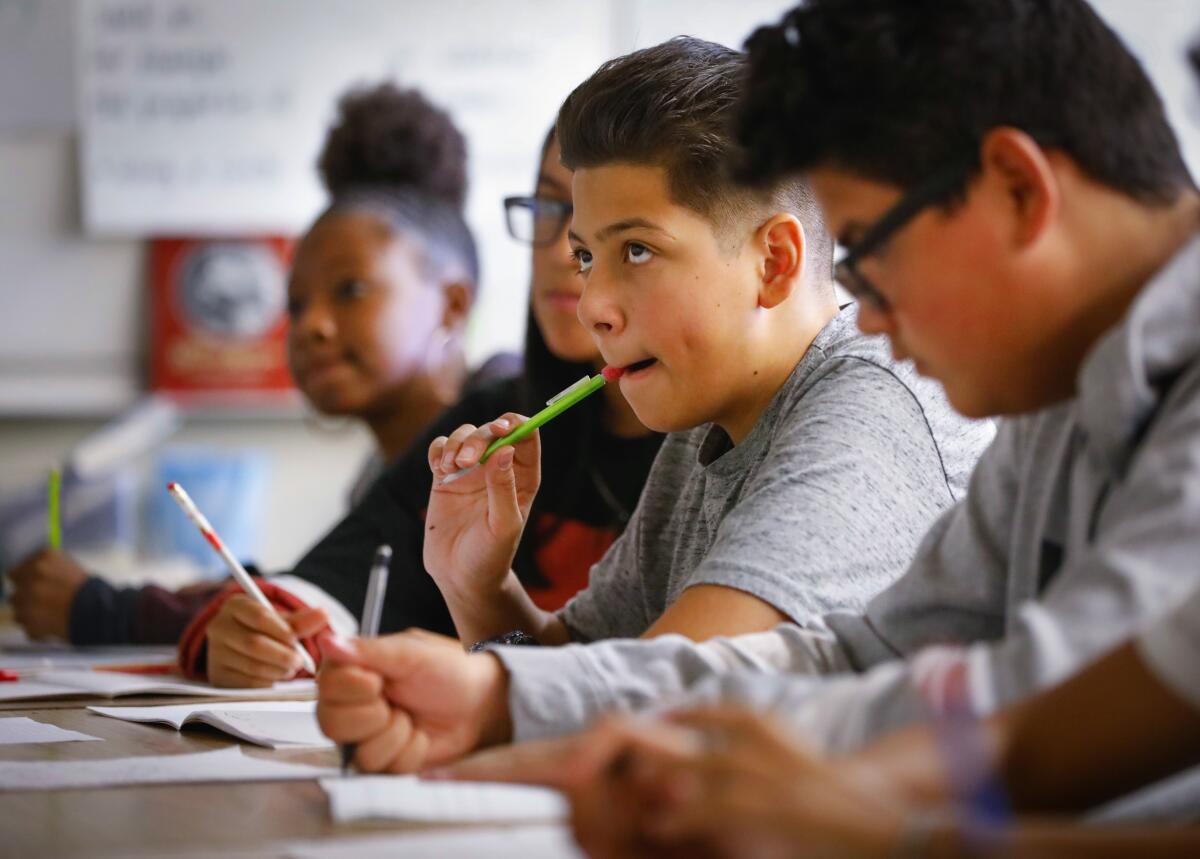Kids aren’t making progress on national tests — and that’s from before the pandemic

- Share via
The results from the latest nationwide tests of student proficiency are grim. Downright depressing. For the first time in the 50-year history of these tests, the scores of 13-year-olds fell in both reading and math. Scores for 9-year-olds showed no improvement compared with 2012.
The gap in scores between white students and Black and Latino students grew.
Nor can anyone blame the pandemic for this. The tests were administered in very early 2020, before the pandemic shut down most in-person schooling.
The results come from the National Assessment of Educational Progress, well-known for its biennial tests called “the nation’s report card.” But this is a different iteration of NAEP tests given to students ages 9, 13 and 17, and less frequently. The Long-Term Trend Assessment looks at progress — or lack of it — over stretches of time. Scores were last reported for the 2012 tests. (The 17-year-olds weren’t tested in this latest round because the pandemic struck before their exams were scheduled to take place.)
No single test tells the whole story of what students are learning or achieving (and these scores are not broken down by state or school district). But the long-term results shouldn’t shock anyone; they’re pretty much in keeping with what the biennial NAEP tests have found: Many students are significantly below grade level on the basics. If students had been making even incremental progress over the previous eight years, that should have added up to at least a significant improvement.
If anything, scores should have been depressed in 2012 because for the previous few years, school budgets had been squeezed to the breaking point by the Great Recession. From that point until the pandemic, more money was available for education.
Still, many factors could have contributed to the fall-off. The No Child Left Behind Act ended in 2015, and though it was a crazily rigid, narrow and punitive law, its replacement essentially allowed states to eliminate any real consequences for schools when students were doing poorly. Once schools ended programs and laid off large numbers of teachers during the recession, it could have taken some years to rebuild. The improved economy meant that teachers often could find more lucrative work outside the public education system.
The nation can’t afford to play guesswork with this. It’s quite possible that President Biden’s proposal for universal preschool will make a real difference down the road. There’s evidence that high-quality preschool helps disadvantaged students significantly. But lack of such preschool isn’t an excuse for the backward slide we’re seeing.
The U.S. Department of Education should be putting its research muscle behind an effort to figure out what happened to the nation’s students over those eight years. There’s still a problem, for example, with schools not using the reading curricula that have been proven to improve literacy. Or perhaps more money needs to go toward reducing the attrition rate among teachers; somewhere between 30% to 50% of them leave within their first five years.
The test results show that going “back to normal” after the pandemic isn’t going to cut it. Schools need the extra funding the American Rescue Plan is bringing in, but that funding has to be targeted in ways that work.
More to Read
A cure for the common opinion
Get thought-provoking perspectives with our weekly newsletter.
You may occasionally receive promotional content from the Los Angeles Times.









